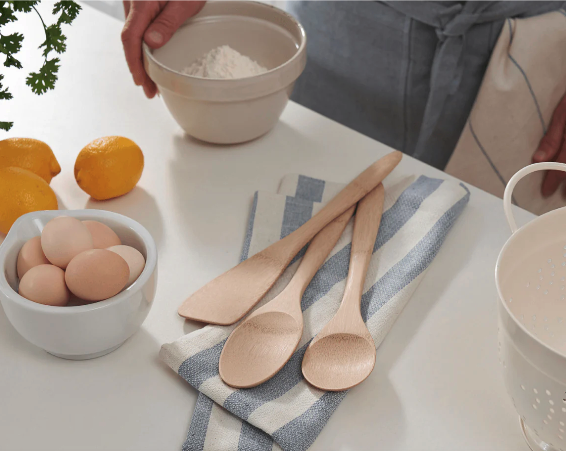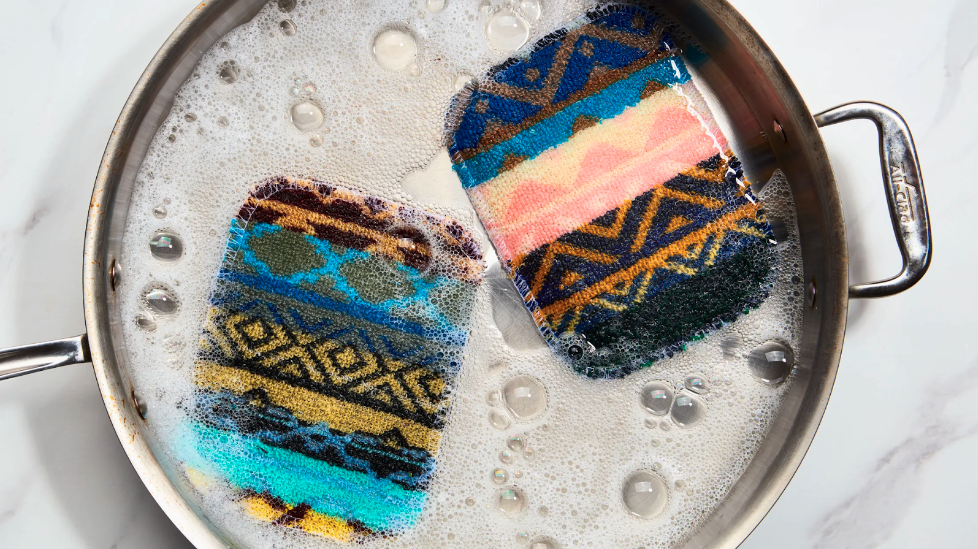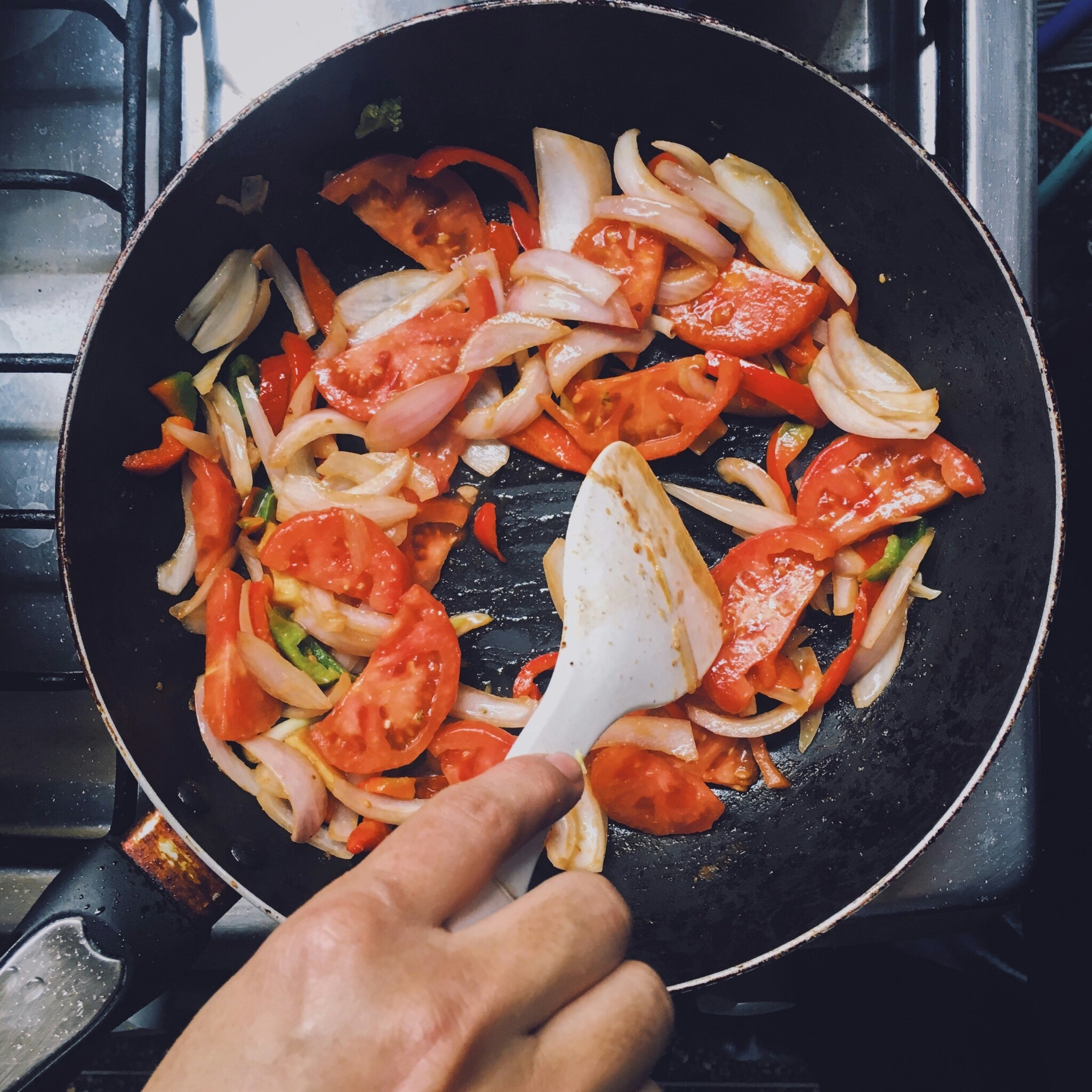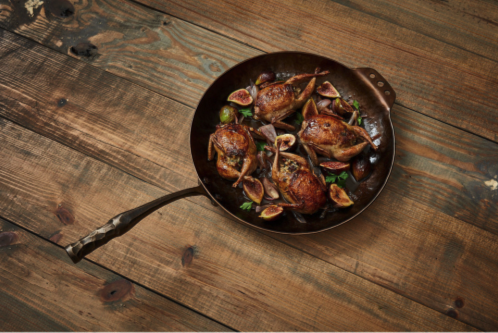Paige Knight - 05 / Apr / 2024
Non-Stick Cookware Myths & Truths
Discover the truth about non-stick pans! Uncover myths about non-stick coatings, from toxicity concerns to durability, and learn how to use non-stick pans.

Everybody wants to know: isn’t non-stick cookware bad? What about forever chemicals and microplastics? Are non-stick pans going to give me cancer? These are some of the most frequent questions we’re asked at Blackstones, and I understand the concern. Non-stick cookware has a complicated history, leaving it with a nasty stigma that isn’t necessarily deserved today.
The simple answer to this age-old question is: NO. Non-stick cookware is not toxic when used properly. There are many misconceptions about non-stick cookware and we’re here to help set the record straight. Keep reading to learn about the complicated history of Teflon and to learn about some common non-stick myths that need to be debunked.
What is Non-Stick Cookware?
You’ve probably heard of non-stick cookware, but what makes a pan non-stick? Non-stick cookware and bakeware consists of pots, pans, baking sheets and other cooking tools that are coated with a non-stick coating. Non-stick cookware is often made from conductive materials, like aluminum, that are coated in non-stick material.
Many people like non-stick cookware because it can be less expensive (unless it has a tri-ply construction like a premium quality frying pan), convenient to use and easy to clean. It’s perfect for delicate jobs, like flipping pancakes and making egg dishes, and it’s often boasted as a low fat option that requires less oil than other cookware types (more on that later).
Overall, non-stick cookware is a great choice for cooks at every level who want a convenient option for jobs that require a gentle touch at medium heat.

Demeyere's pans, especially the AluPro Non-Stick Frying Pan, are a great choice for non-stick cookware.
Types of Non-Stick Pans
Lots of cookware and bakeware come in non-stick varieties. In our types of cookware blog, we talk about the difference between traditional non-stick and ceramic, but we’ll give you the rundown here too. Traditional non-stick cookware is made with Teflon, or PTFE, the infamous chemical that we’ll be discussing below.
Ceramic cookware, however, is not made using Teflon. Ceramic non-stick pans are metal pans coated in a finish that uses silicon to prevent sticking. For this reason, ceramic non-stick pans are sometimes lauded as a “safer” alternative to traditional non-stick, but some say traditional non-stick isn’t all that bad to begin with. You can be the judge of that after you read what we have to say below.
It’s important to always adhere to the manufacturer’s guidelines when cooking with non-stick, so here are some of the most common brands that manufacture non-stick pots and pans, the types of non-stick pans they make, and their specific use guidelines:
| Manufacturer | Type | Use Guidelines |
| Ballarini | Traditional Non-Stick | Oven-safe up to 300°F (148°C) and safe on gas, electric, ceramic, and halogen stove top cooking. |
| Cuisinart | Traditional Non-Stick | Oven-safe up to 350°F (176°C) for up to 20 minutes at a time. |
| Demeyere | Traditional Non-Stick | Heat resistant up to 446°F (230°C). |
| All-Clad | Traditional Non-Stick | Oven-safe up to 500°F (260°C) and safe on all stovetops, including induction. |
| GreenPan | Ceramic Non-Stick | Oven/broiler safe up to 600°F (315°C) and safe for all stovetops except induction. |
| Le Creuset | Ceramic Non-Stick | Oven-safe up to 475°F (245°C). |
| Zwilling | Ceramic Non-Stick | Oven-safe up to 400°F (205°C) and safe for all stovetops, including induction. |
Non-Stick Myth #1: Non-Stick Pans Are Toxic
By far the most common myth we encounter when discussing non-stick cookware is that it’s toxic. We hear lots of talk about cancer, microplastics, and the dangers of PTFE and Teflon.
Here’s the hard truth: Many years ago, non-stick coatings DID contain harmful chemicals (PFOA in particular) or used these chemicals in the manufacturing process, but they don’t anymore. Understandably, this has led to a distrust of non-stick cookware that persists today. So, what is the truth? I did a little digging so you don’t have to. Sit back, relax, grab some popcorn, and buckle up for the complex story behind Teflon branded coatings.
The History of Teflon
Teflon is the brand name for a material called polytetrafluoroethylene (PTFE). PTFE is a synthetic material, first created in the 1930s, that is made of carbon and fluorine. PTFE is a nonreactive, non-stick material that is used for everything from coating non-stick pans to producing waterproof fabrics and cable coatings.
In the early 2000’s, concerns were raised about the safety of PTFE. Before 2013, a chemical component called perfluorooctanoic acid (PFOA) was utilized in the application of the PTFE non-stick coatings. PFOA is a manufactured perfluorochemical that was previously used to make fluoropolymer coatings that resist heat, oil, stains, and water. In recent years, numerous studies (1, 2, 3) have linked PFOA to health conditions like thyroid disorder, kidney disease, liver disease, testicular cancer, infertility and low birth weight.
In response to these findings, most manufacturers began cracking down on non-stick coatings using PFOA in 2002. In 2006, the PFOA Stewardship Program was launched by the U.S. Environmental Protection Agency (EPA) to eliminate PFOA from Teflon products. Eight companies, including the maker of Teflon, were involved. In 2013, PFOA was officially banned for use in the production of non-stick coatings in the U.S. or produced elsewhere and sold in the US.

NordicWare’sNon-Stick Baking Sheet is perfect for your favorite sweet (or savory) treats.
Teflon Today
To make a long story short: harmful chemicals were used in the production of non-stick cookware before 2013, but they aren’t used anymore. Non-stick cookware manufactured from 2014 onward is PFOA-free and safe for everyday cooking, as long as you don’t exceed the temperature maximum set by your manufacturer. Above maximum temperatures, Teflon, and other PTFE coatings, do have the potential to break down over time and release toxic compounds into the air (think - burning and smoke).
In extreme cases, these compounds can lead to something called polymer fume fever (AKA Teflon flu), which causes symptoms like fever, chills and body aches for up to 48 hours. The only cases (4, 5, 6) of long-term side effects happened when users were exposed to temperatures of 730°F+ for 4+ hours at a time.
According to the American Cancer Society (7), non-stick cookware without PFOAs present no proven risk to humans, aside from extreme cases where pans were heated above safe temperatures for extended periods of time. Home cooks who follow common-sense cooking practices are safe from these potential dangers.
Non-Stick Myth #2: Non-Stick Coatings Don’t Last
The second common myth is that non-stick doesn’t last. True, non-stick cookware has an average lifespan of 2-3 years, but that doesn’t have to be the case. Non-stick cookware that is well cared for and used within the recommended temperature range, can last as long as 5 years. All you have to do is follow a few simple best practices.

Wooden spoons and spatulas are great, non-abrasive tools for non-stick pans.
Taking Care of Non-Stick Pans
- Avoid high-heat applications: As we discussed in the previous section, non-stick cookware can release toxic chemicals when subjected to excessively high heat. What’s more, heating a non-stick pan above temperatures recommended by manufacturers can cause the non-stick coating to deteriorate faster, shortening the life of your cookware.
- Use non-abrasive cooking tools: Abrasive or sharp cooking tools, like those made with metal, can lead to cracks or scratches on non-stick cookware, shortening the life of your non-stick pans. Instead, opt for materials like wood, silicone or plastic when choosing cooking tools.
- Avoid aggressive cleaning: After using non-stick cookware, DO NOT use cleaning materials like steel wood or scouring pads (i.e. green Scotch Brite pads) or abrasive cleaners. Instead, wash non-stick cookware with dish detergent using a soft sponge, brush or rag that will not scratch. Most manufactures recommend NOT putting non-stick cookware in the dishwasher - read more below for full details why).
- Store non-stick cookware carefully: When storing non-stick pans or baking sheets, be sure to place a cloth towel between each piece of cookware to avoid scratching the cooking surface with the scratchy bottom of another pan.
When to Replace Non-Stick Pans
It’s important to keep in mind that, in addition to being less effective, scratched non-stick cookware may leave you vulnerable to microplastics and nanoplastics getting into your food. With that in mind, be sure to replace non-stick cookware when:
- The coating is damaged by scratches, cracks or bubbles.
- Food starts sticking to the pan, which is a sign that the coating is wearing off or has degraded.
- Your non-stick pans were made before 2014, before PFOAs were banned in the production of non-stick coatings.

Scouring pads are great for other types of pans, but they may be too abrasive for non-stick cookware.
Non-Stick Myth #3: You Should Preheat Non-Stick Pans
As we’ve discussed above, non-stick cookware is not meant for high-heat applications, which can break down the coating, releasing toxic fumes into the air and deteriorating your cookware. Those jobs are better suited for materials like cast iron, carbon steel, and stainless steel. As a general rule of thumb, you should never heat non-stick pans above the smoke-point of common cooking oils [450-500°F (260°C)], but always be sure to check your manufacturer’s guidelines for specific heat parameters.
Preheating is necessary for other types of cookware. Cast iron pans, for instance, are less conductive and slower to heat, so it’s necessary to preheat them to get them to the proper heat point before cooking. However, this is not recommended for non-stick pans.
Empty non-stick pans can reach high temperatures within minutes, exceeding manufacturers’ recommendations, deteriorating the pan and potentially releasing toxic fumes. We recommend you don’t preheat an empty non-stick pan. Instead, add liquid, oil or food to the pan before preheating, and cook on low to medium heat to avoid exceeding temperature recommendations.
Non-Stick Myth #4: Non-Stick Pans Don’t Need Oil
Many manufacturers make the claim that non-stick pans don’t require oil. They do this in an attempt to incentivize consumers to buy their products by marketing them as a healthy, low-fat option.
While it is technically doable to cook without oil on a non-stick pan, it’s not recommended. Cooking without oil can cause non-stick coatings to erode quicker, leading to damaged cookware. Additionally, some non-stick pans could release toxins when heated without any kind of cooking fat.

Don’t deprive yourself of essential nutrients (and ruin your pan in the process). Make friends with cooking oils!
Continuing to cook on non-stick pans that have been physically damaged, or degraded by excessive heating, the lack of some oil can leave you vulnerable to microplastics and/or the release of toxic fumes from overheating. In contrast to these consequences, what’s a little extra fat? Fat amplifies non-stick pans’ effects when added before food, and – let’s face it – it makes food taste better.
While you can cook without any oil at all, non-stick pans do require way less oil than other types of cookware. For best results, add a small amount of cooking fat/oil, like butter or olive oil, as soon as your non-stick pan is placed on the heat.
What Not to Use
While it’s recommended to use a bit of fat, like butter or olive oil, on non-stick pans, it’s important to avoid using cooking sprays. Cooking sprays can create a build-up of residue that doesn’t easily wash off, and the effort needed to remove this residue can damage your pan.
Non-Stick Myth #5: You Should Put Non-Stick Pans in the Dishwasher
Similar to myth #6, manufacturers often list non-stick pans as “dishwasher safe” as a way to overstate the convenience of their products. While not technically untrue, this isn’t the full story.
Non-stick cookware won’t melt or fall apart in the dishwasher, making it “dishwasher safe.” But, the high heat and abrasive detergents used in the dishwasher will degrade non-stick coatings more quickly, leaving you more vulnerable to a peeling coating that may release microplastics into your food. If you want to get the most bang for your buck, we recommend taking the time to hand wash your non-stick cookware with gentle dish soap and a soft sponge, brush, or dish cloth.

Carbon steel is a good non-stick alternative with high-heat capabilities
Non-Stick Alternatives
Non-stick cookware is a great option for everybody, from beginners to experienced cooks. A non-stick cookware set is perfect for a first apartment, college dorm or for parents whose kids are learning to cook. As you become a more experienced cook, you may find yourself searching for other materials to diversify your cookware and bakeware collection. Check out our types of bakeware and types of cookware blogs to learn how to choose the right material for your unique needs. And if you’re still feeling a little iffy about non-stick, cast iron and carbon steel cookware are great non-stick alternatives
Find The Right Cookware For You
Non-stick, cast iron, stainless steel, carbon steel, whatever, the best type of cookware is the one that fits your unique needs. At Blackstones, our staff is concerned with finding the perfect products for each of our customers, whether they’re looking for a specialty kitchen knife, a beautiful piece of home decor or a new frying pan. Stop by our Boston location at 40 Charles Street to talk with our experienced and friendly staff, view our extensive inventory and get a taste of the Beacon Hill experience.
Don’t live nearby? No problem! We ship everywhere in the continental U.S., and we have a great website for you to explore our inventory from the comfort of your home. Check out the Blackstone’s of Beacon Hill website to bring Beacon Hill a little bit closer to home.










